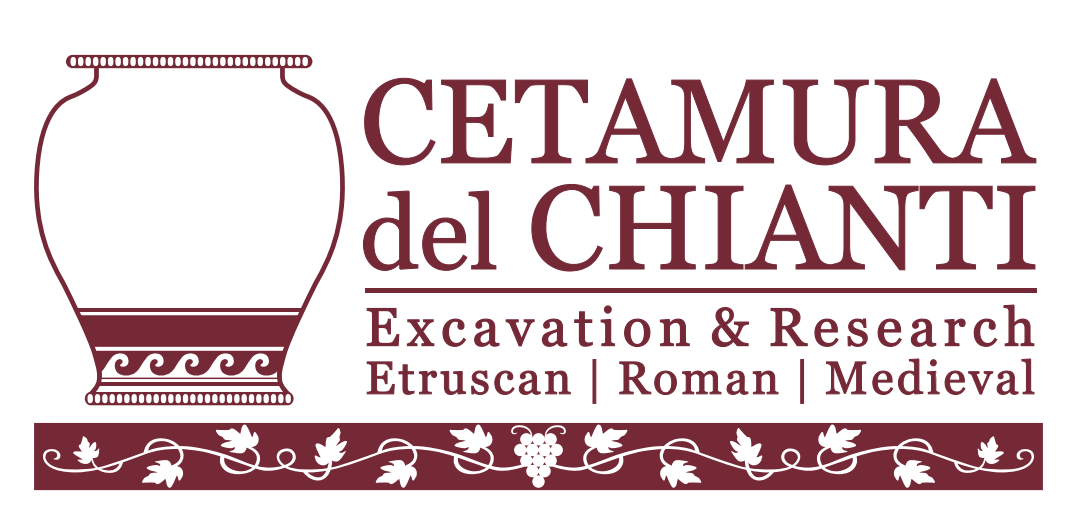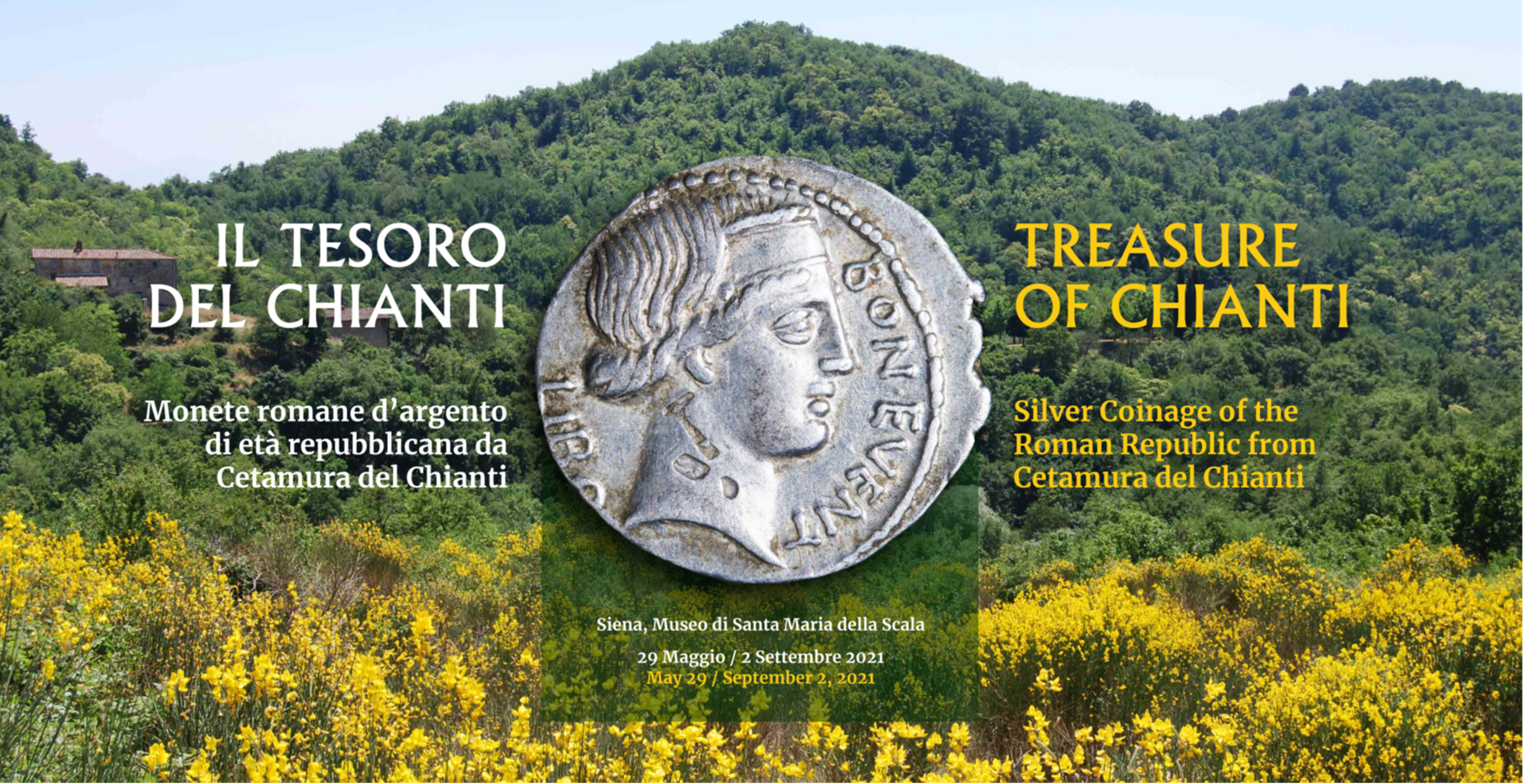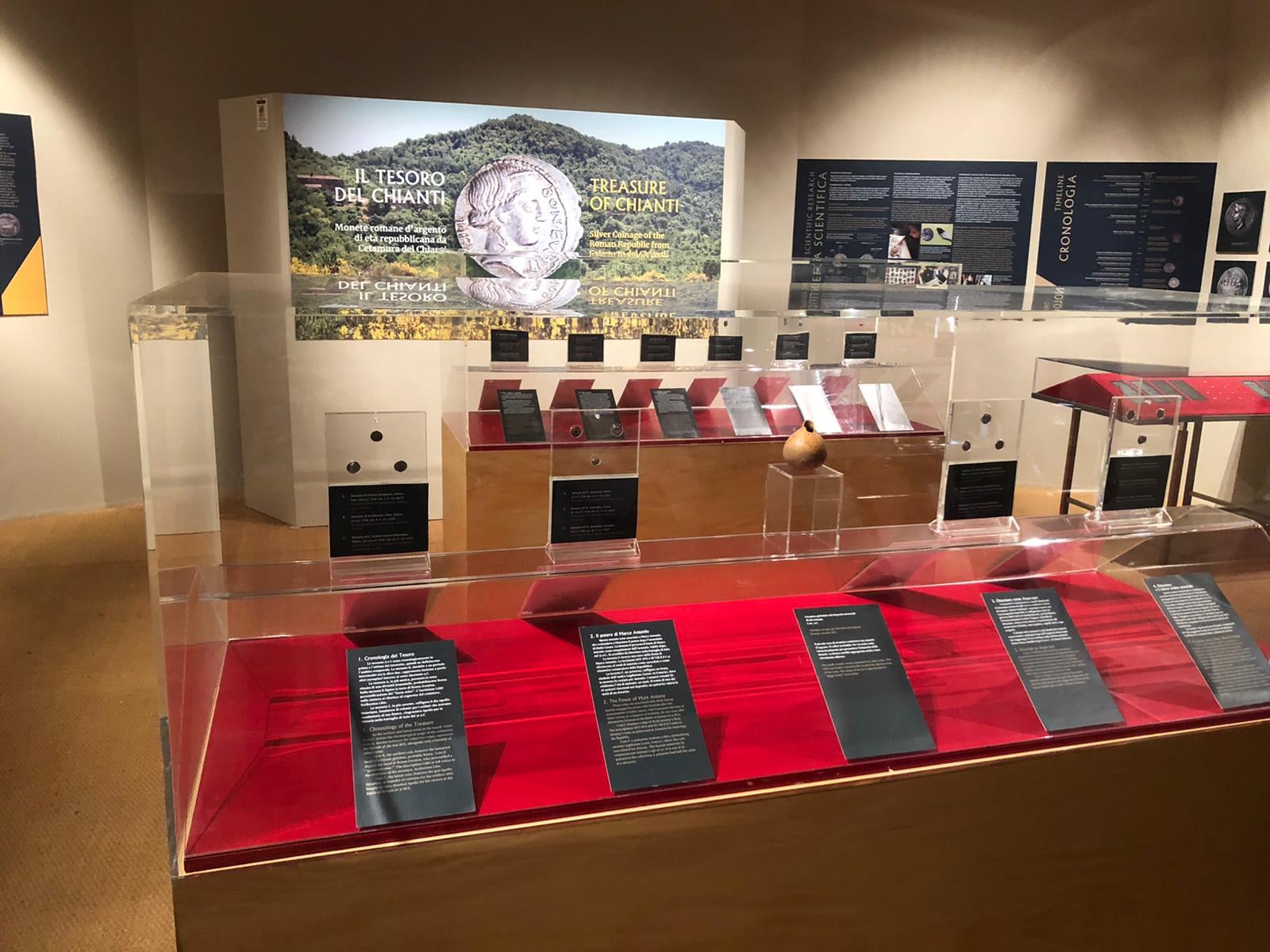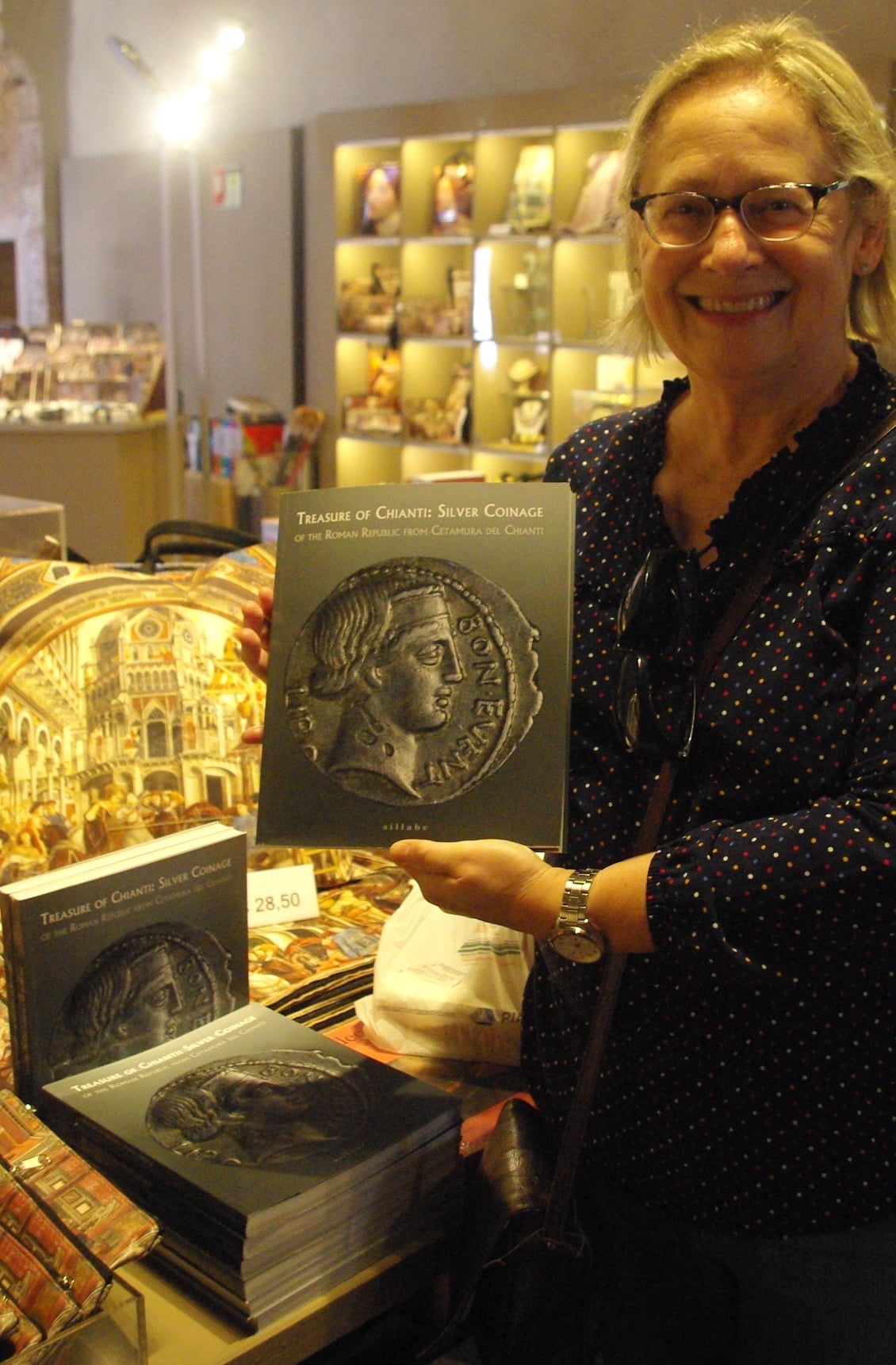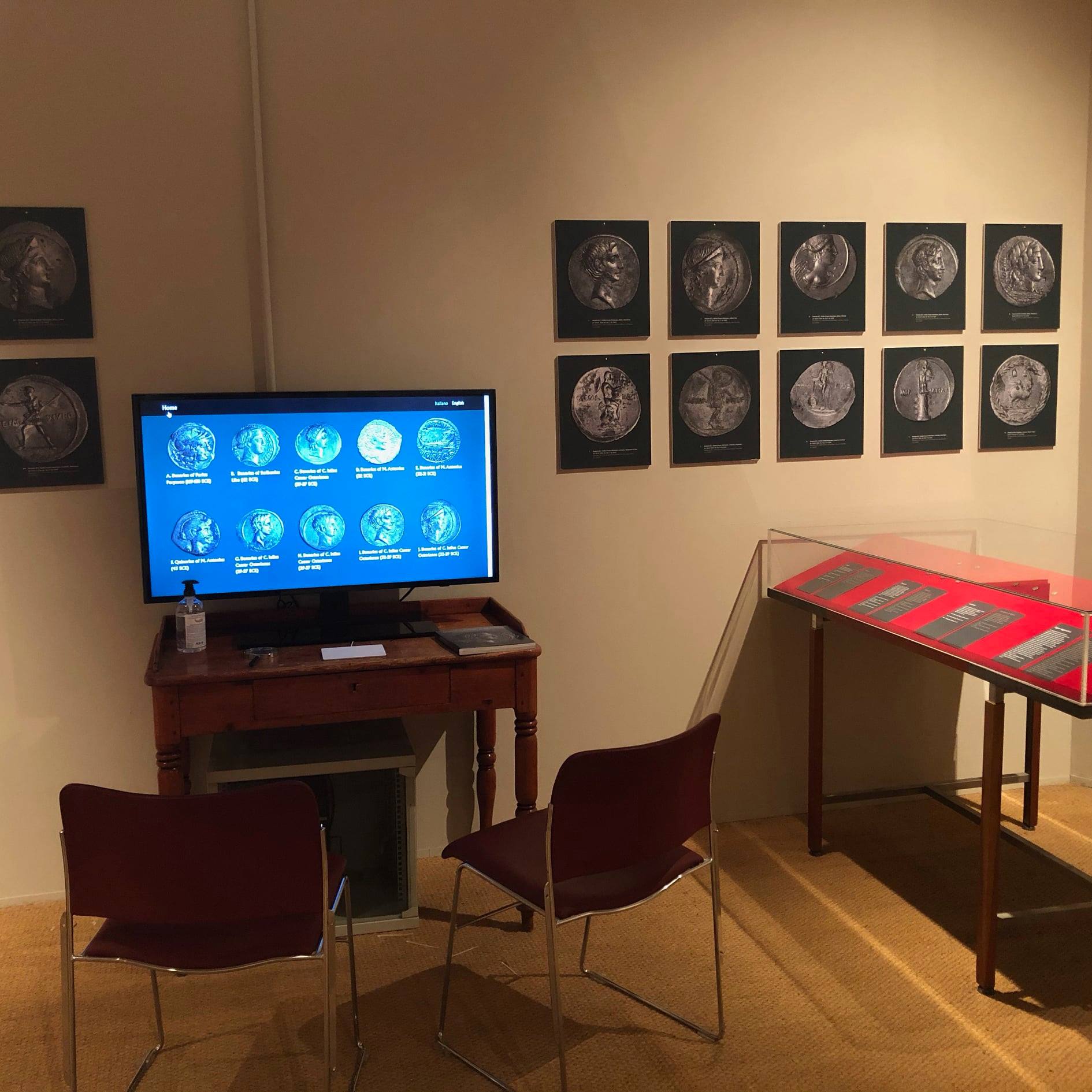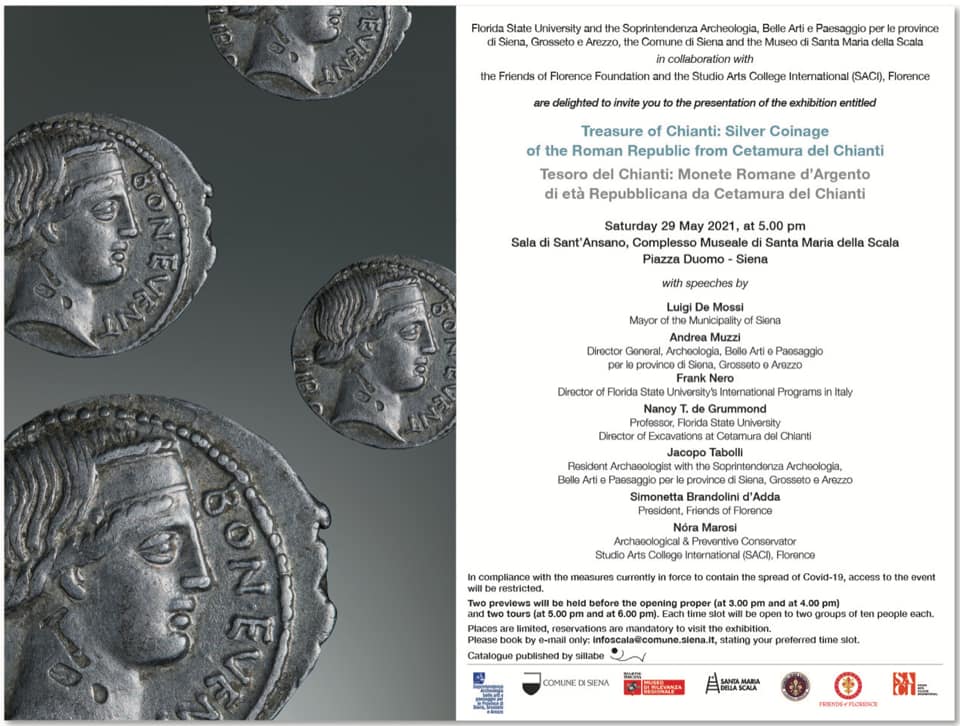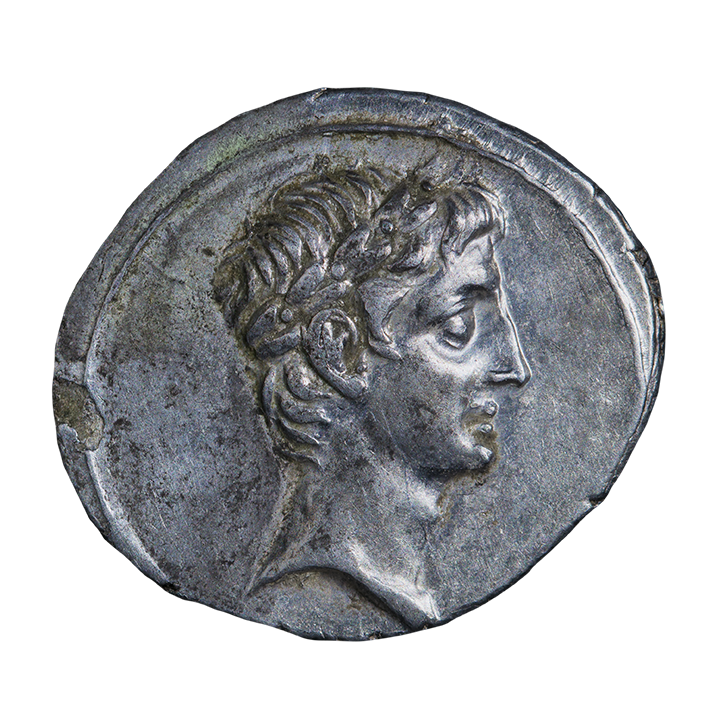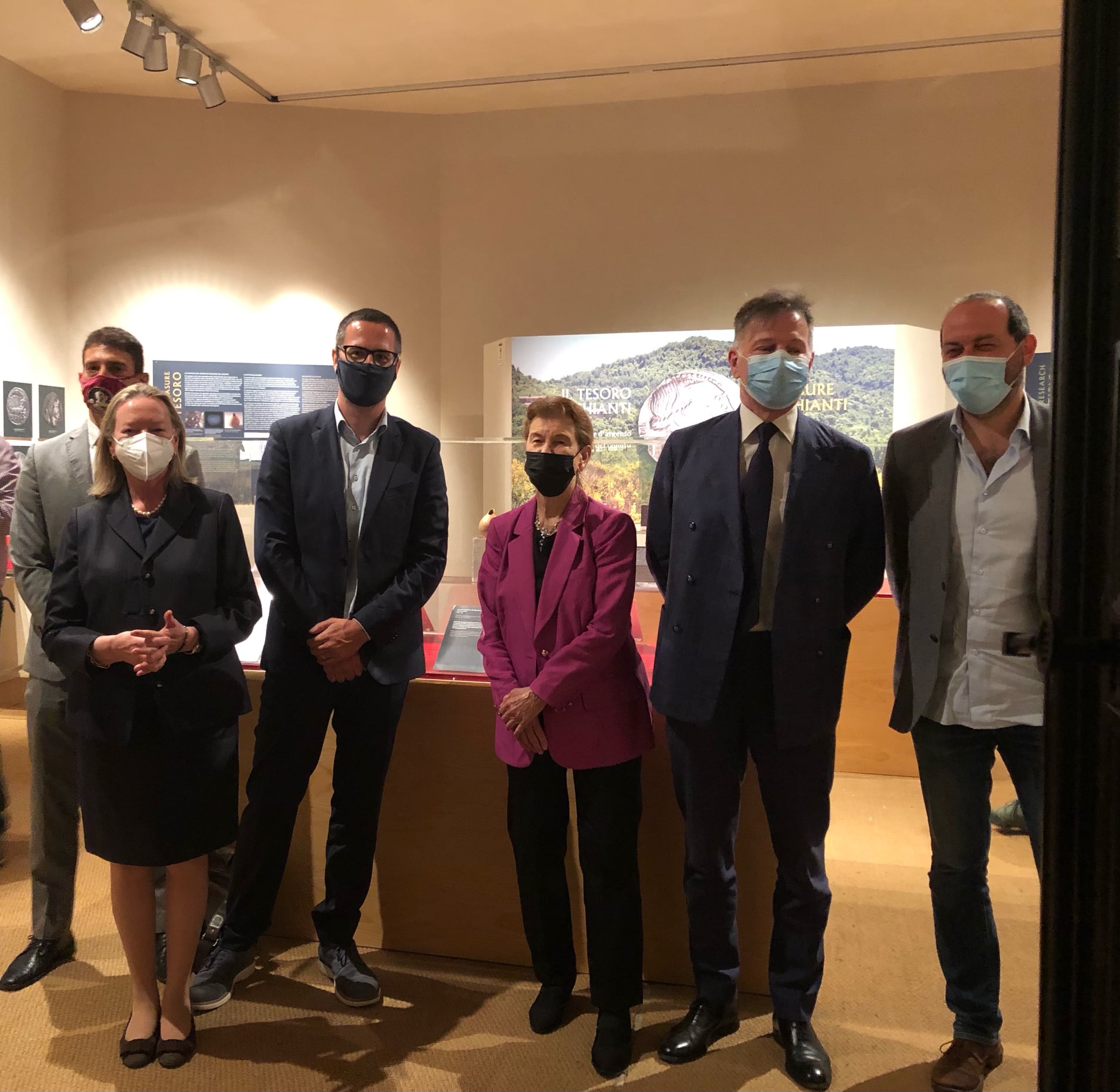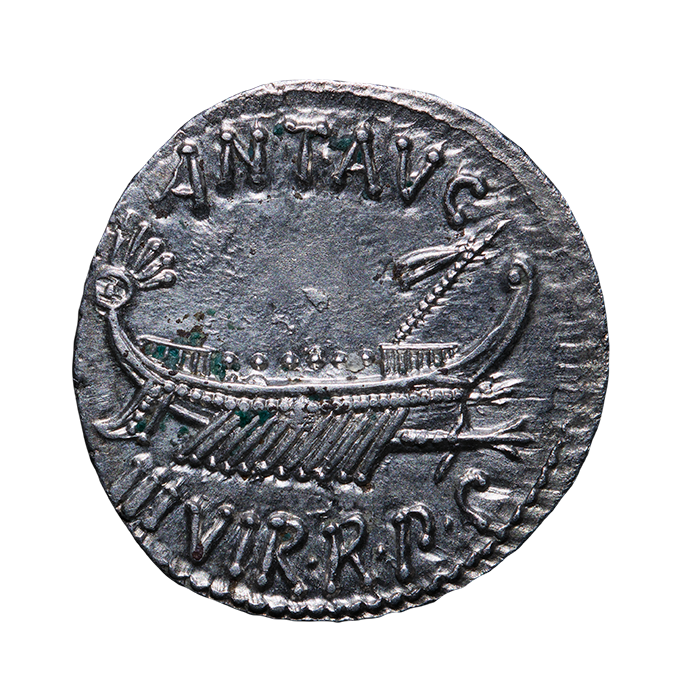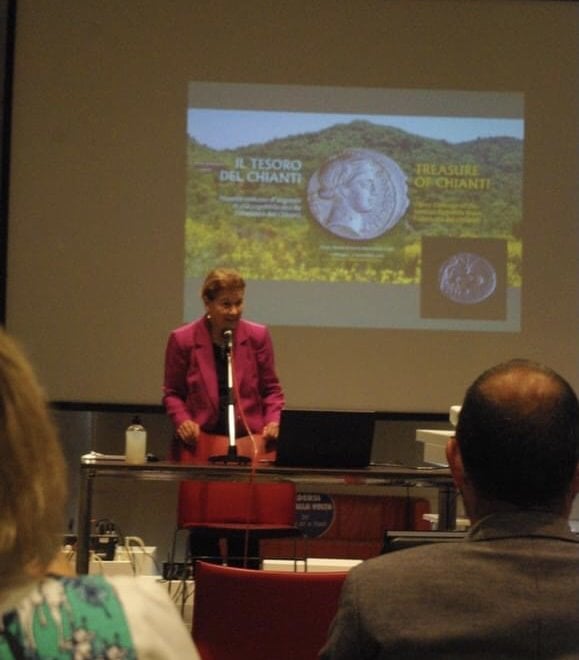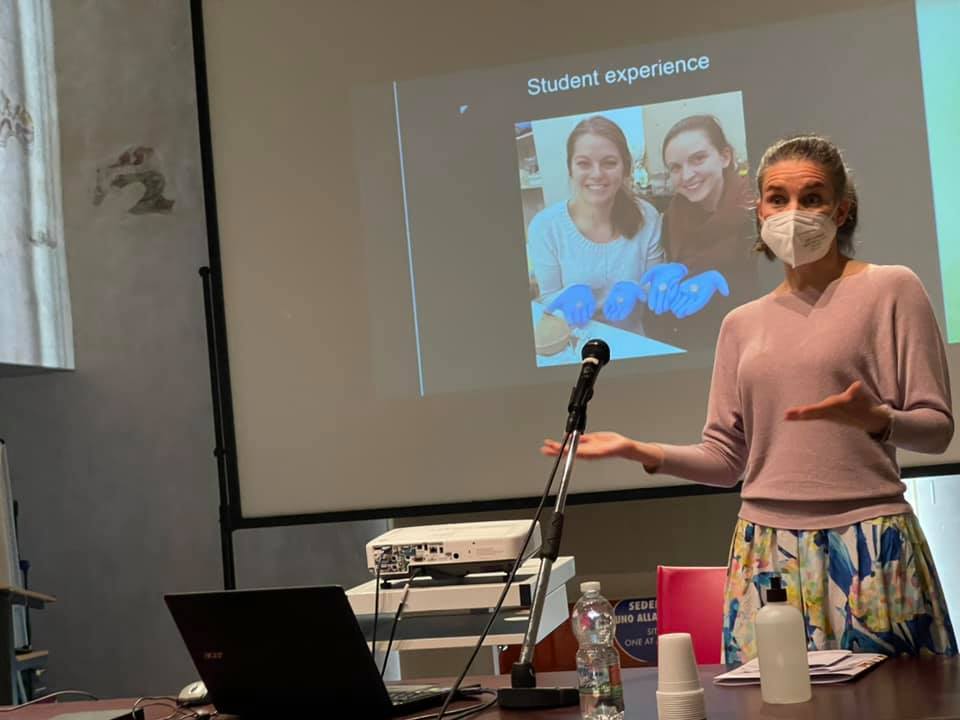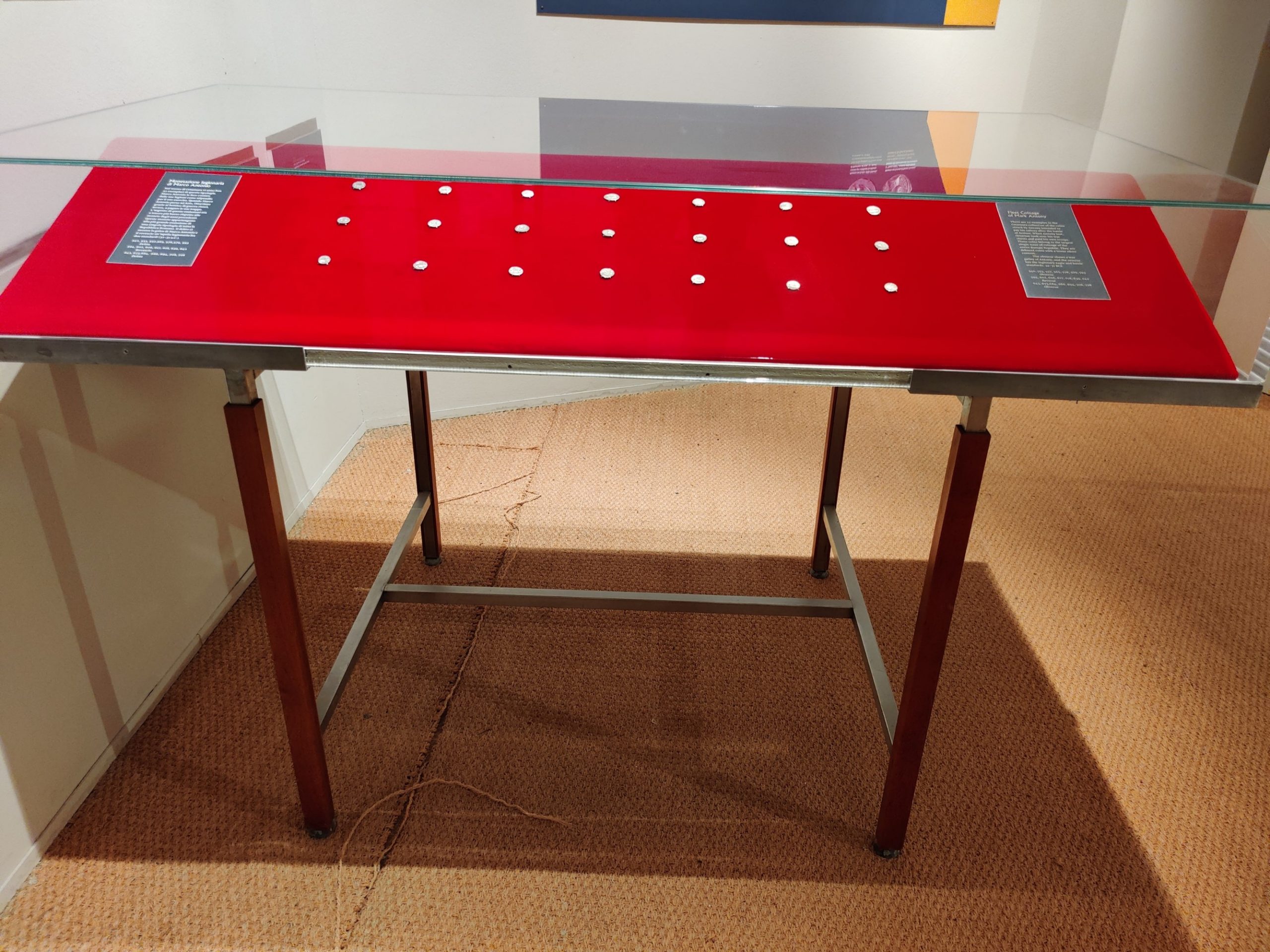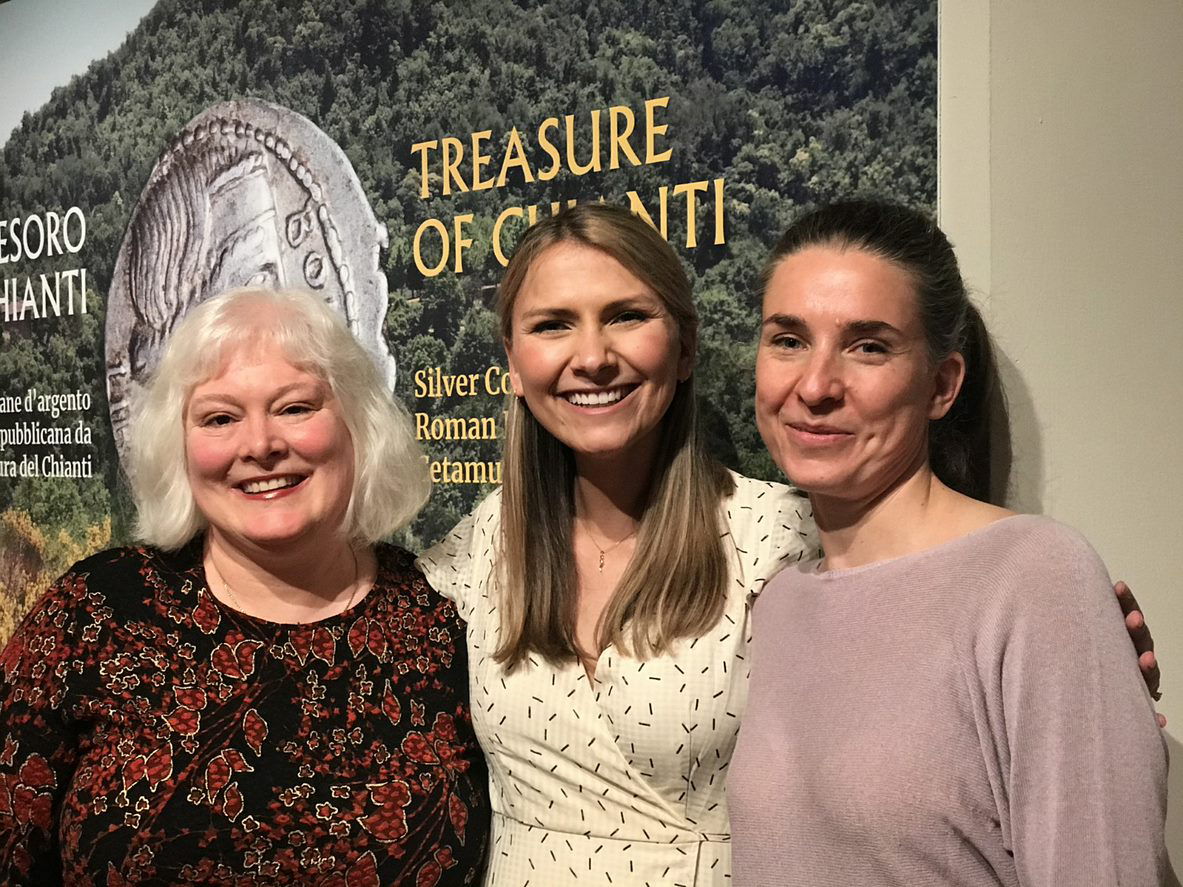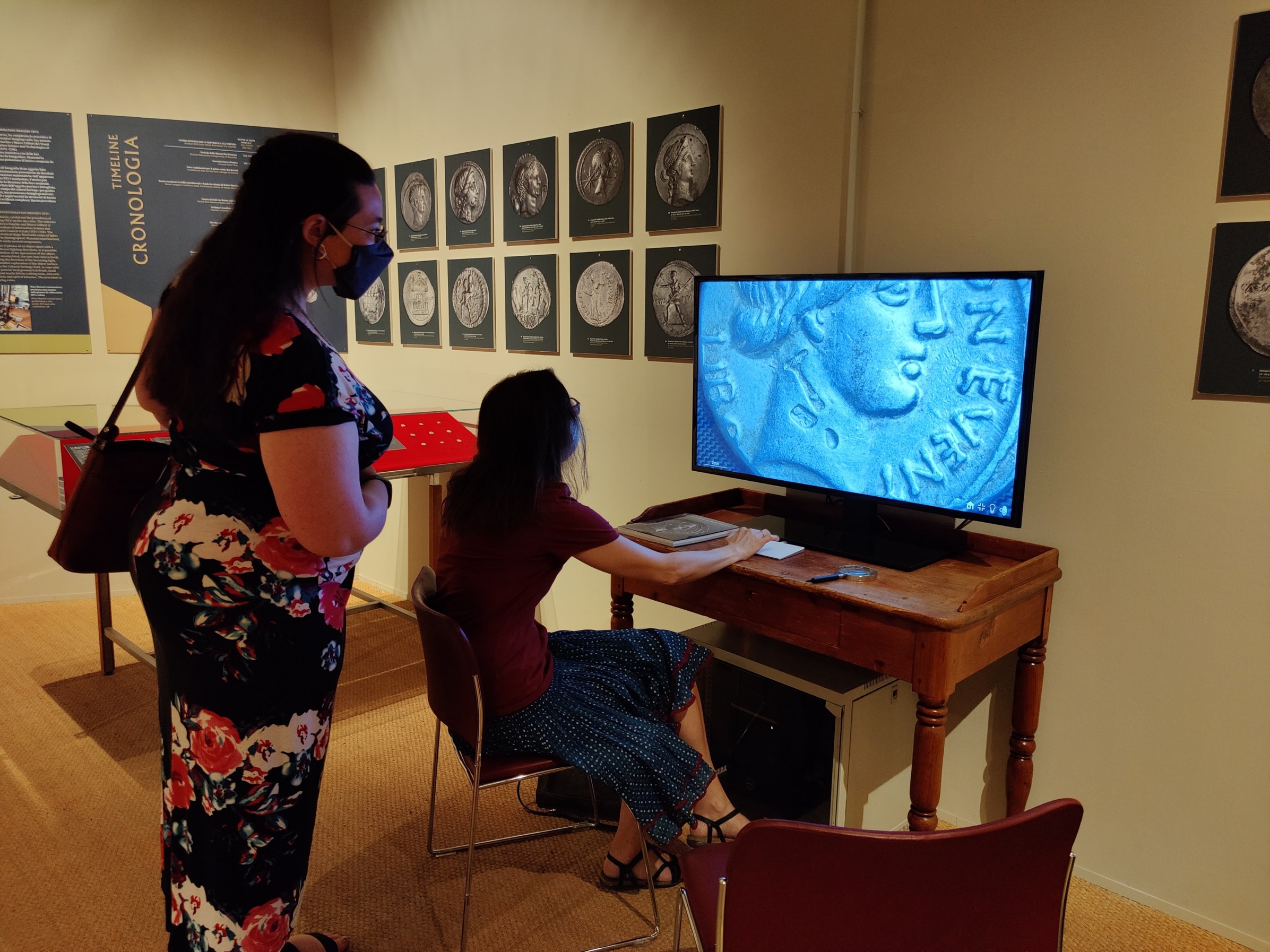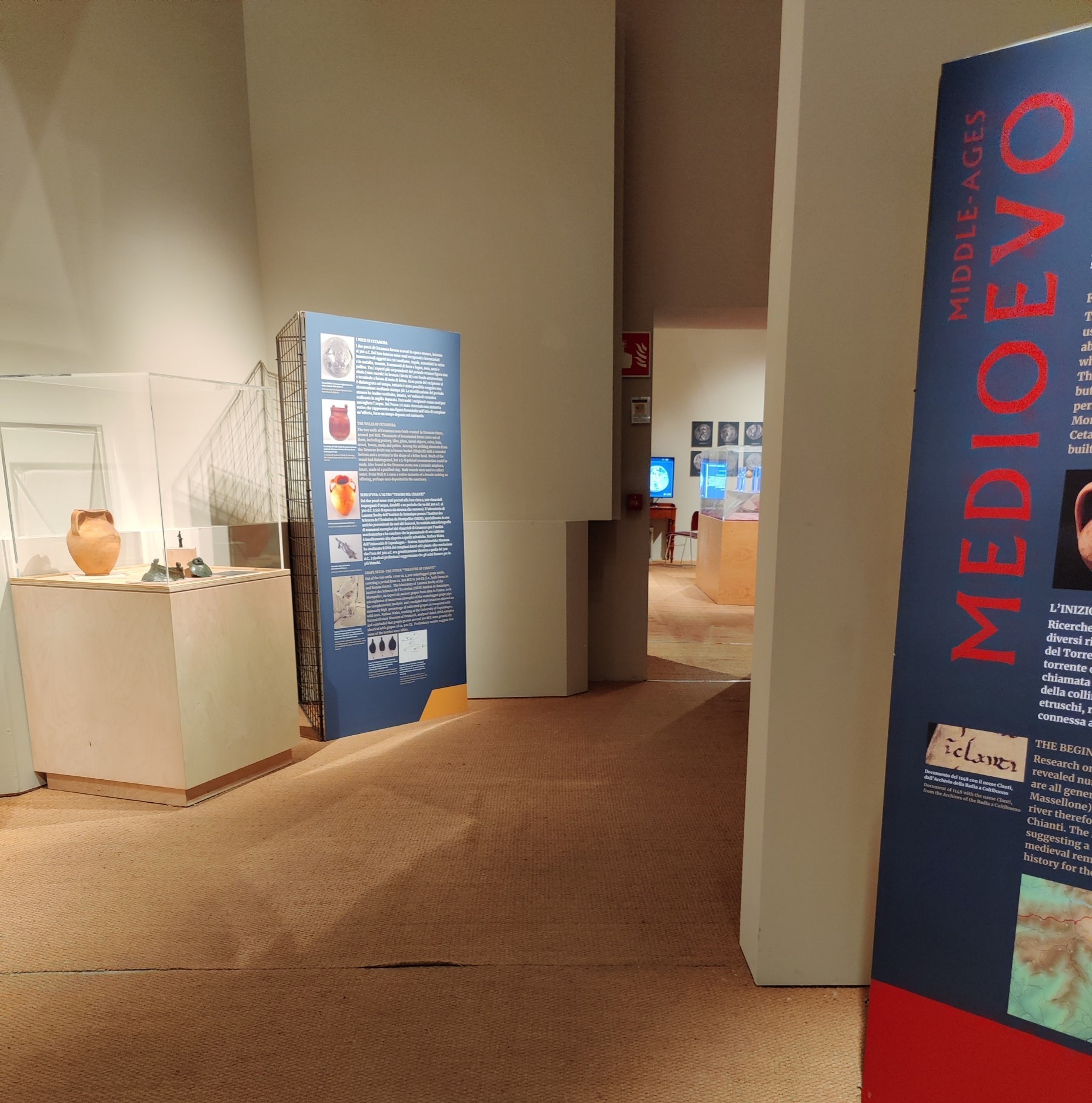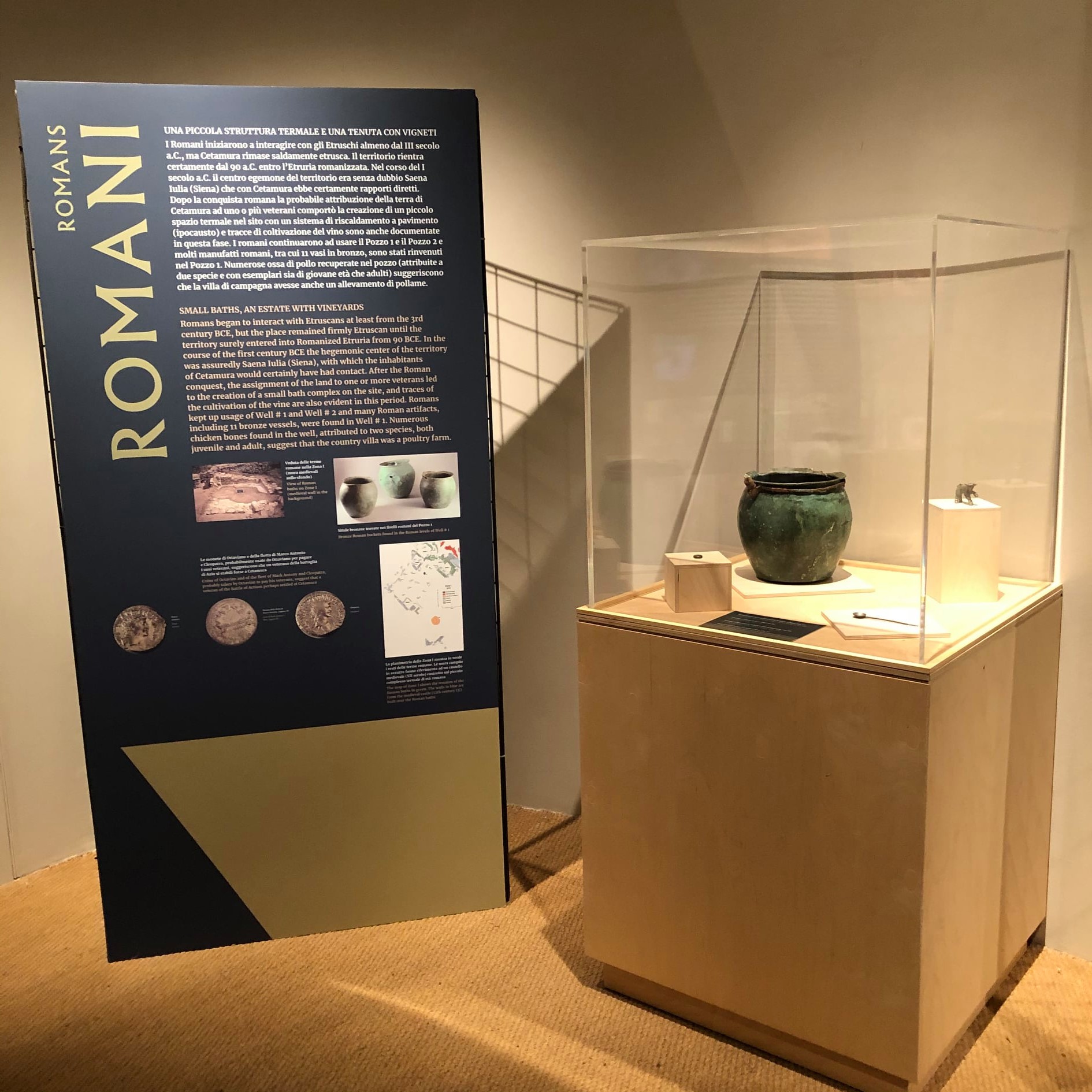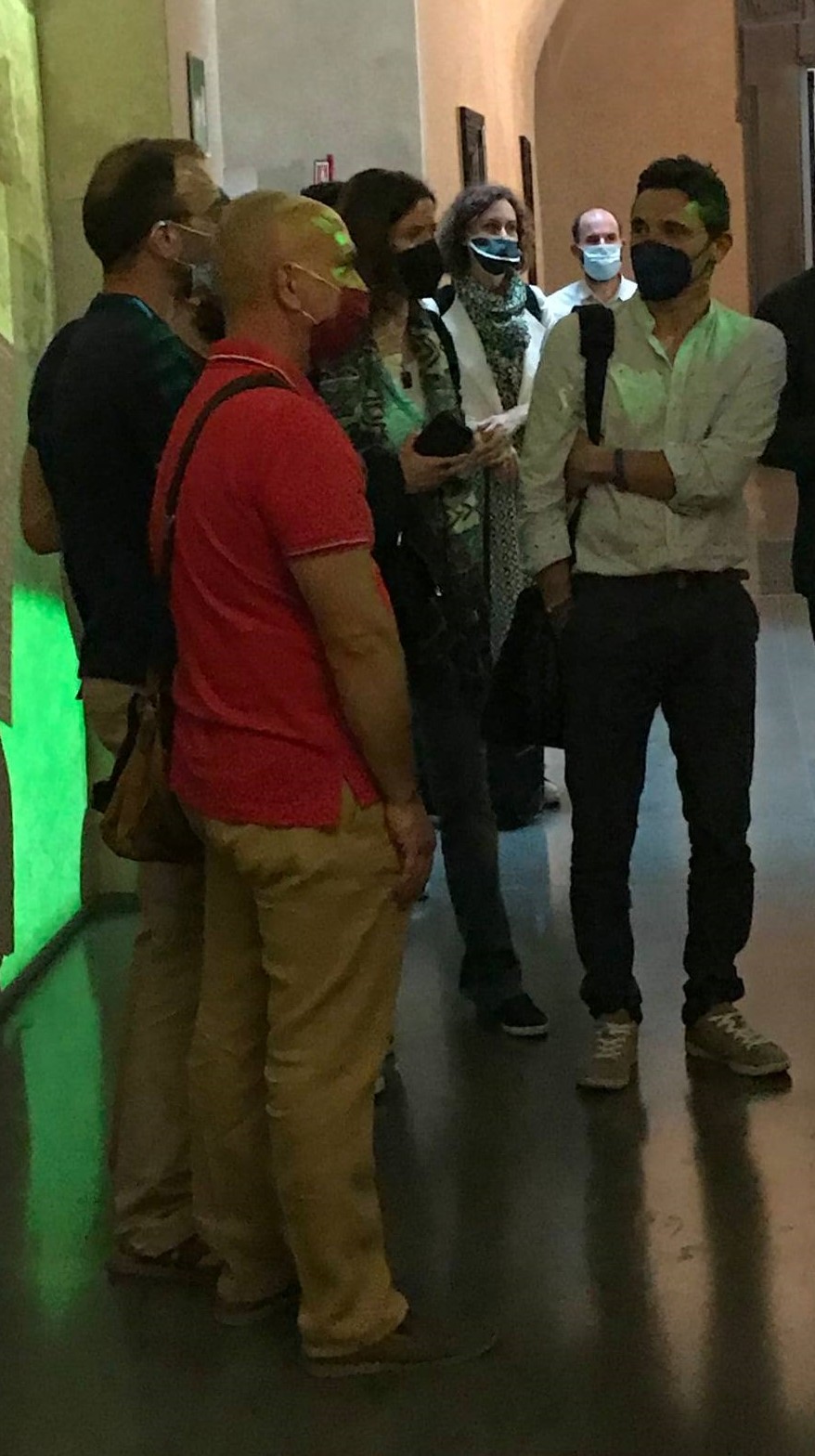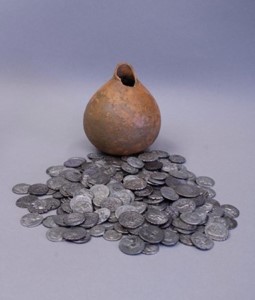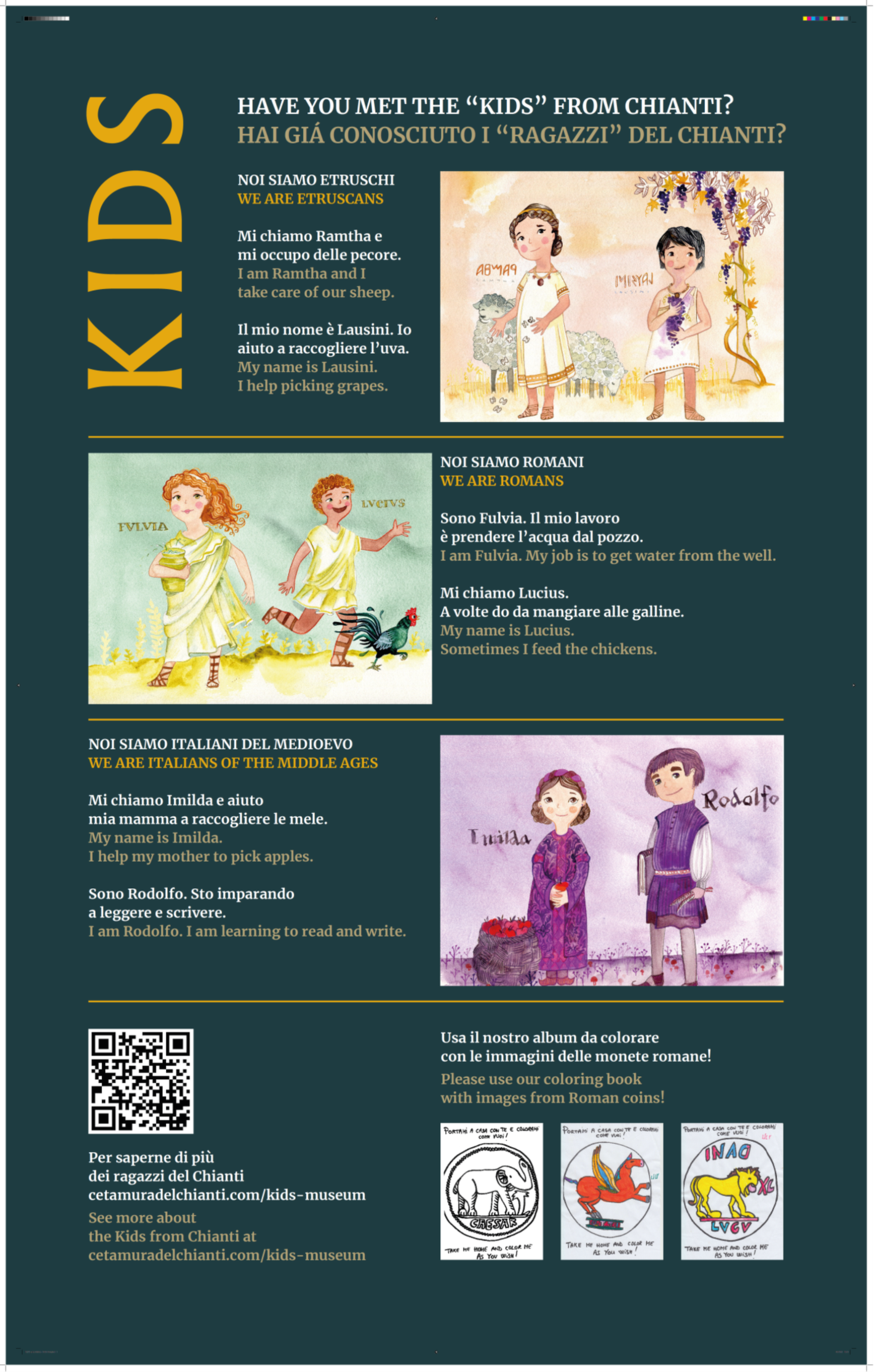AN EXHIBITION AT THE MUSEO DI SANTA MARIA DELLA SCALA, SIENA ITALY | MAY 29-SEPTEMBER 30, 2021
Treasure of Chianti: Silver Coinage of the Roman Republic from Cetamura del Chianti
A splendid new discovery of a “treasure” of Roman silver coins found at Cetamura del Chianti was put on display at the Museum of Santa Maria della Scala in Siena, Italy, on May 29, 2021. The extraordinary find of 194 silver pieces dating from the period of the Roman Republic (2nd-1st centuries BCE) was discovered in 2015 on the highest zone of the site of Cetamura in an area where there is much evidence of sacred activities. Excavators theorize it may have been the separation pay of a Roman soldier who fought in the famous Battle of Actium between Octavian (Augustus) and Mark Antony and Cleopatra, in 31 BCE. The veteran may have buried it for sake-keeping by the gods of Cetamura, but never returned to reclaim it.
The excavation team of Cetamura, led by director Dr. Nancy de Grummond, Professor of Classics at Florida State University in Tallahassee and at the FSU Study Center campus in the Palazzo Bagnesi in Florence, Italy, joined forces with a number of collaborators to produce the show. Superintendent Dr. Andrea Muzzi and inspector Dr. Jacopo Tabolli from the Soprintendenza Archeologia, Belle Arti e Paesaggio per le province di Siena, Grosseto e Arezzo played a key role in planning the exhibition and Dr. Deborah Barbagli and Dr. Roberta Mari of Santa Maria della Scala assisted with the display design. The coins were cleaned and photographed through the innovative technique of Reflectance Transformation Imaging (RTI) with the patronage of the philanthropic association Friends of Florence, by Nóra Marosi of Studio Arts College International in Florence and Jacopo Mazzoni. Dr. Lora Holland Goldthwaite, Professor and Chair of Classics at University of North Carolina, Asheville, served as principal researcher on the coins and authored the catalogue of the treasure show. Dr. de Grummond consulted with her and with Prof. Marosi for the concept of the exhibition.
Many of the coins are in superb condition. They include 178 specimens of the silver denarius, the standard Roman coin of the Republican period and 16 of the quinarius, worth one half of a denarius. Of the greatest interest are coins struck by Mark Antony, including one rare example with his own face on one side and the face of Cleopatra on the other. There are also 22 examples of the “ship coinage” of Antony, showing his warships on the front and legionary standards on the reverse. The war chests of Antony and Cleopatra evidently were confiscated by Octavian after the battle and used to pay his victorious troops. There are also numerous coins upon which Octavian placed his own portrait along with symbols of victory.
The Treasure is undoubtedly the most important find made at Cetamura, and one of the most significant in the region of Chianti. It firmly documents a moment in the Romanization of Cetamura, previously Etruscan, and is without parallel in Chianti. The veteran who buried the coins presumably also received land for a small estate at Cetamura along with his financial reward. The cache is also important because it was scientifically excavated and documented. All too often coin hoards are found by accident by someone digging a ditch or plowing a field and scholars do not feel confident that all the coins are properly reported.
Using the new FSU Study Center as a base under the direction of Frank Nero in Palazzo Bagnesi in Florence was an important part of the success of the show. Alumnae of FSU Florence and Cetamura provided expertise as members of staff for some of the highest level contributions to the exhibition. Dr. Katherine T. Brown, an experienced museum professional and now Dean of Arts and Sciences at Walsh University in Ohio had been a Program Assistant in Florence in 1989 and enjoyed her homecoming as she worked as coordinator of the different aspects of the work with and in the Siena museum and in Palazzo Bagnesi. Jessica Rassau, who holds the MA in Museum and Cultural Heritage Studies from FSU and is now a specialist in Accessibility and Inclusion at the North Carolina Museum of Natural Science in Raleigh, took responsibility for the carefully planned placement of every single coin in the Siena show.
The catalog of the exhibition, Treasure of Chianti: Silver Coinage of the Roman Republic from Cetamura del Chianti, featuring the research of Dr. Holland Goldthwaite, is available from the publisher sillabe of Livorno, Italy. Treasure of Chianti: Silver Coinage of the Roman Republic from Cetamura del Chianti (sillabe.it).
A public lecture on the Treasure in the Bagnesi Lecture series of Florida state University Florence, presented by Dr. de Grummond, with responses by Dr. Holland Goldthwaite, is available on Bagnesi Live Lecture Series: Dr. Nancy de Grummond – YouTube. Concurrently with the Siena show, an exhibition was mounted at the Palazzo Bagnesi called “Coins, Pots and a Castle at Cetamura del Chianti.”
